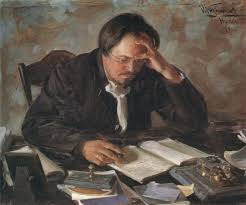
Expressing yourself through any artistic medium can be most effectively done when you are being genuine and true to the spirit that moves you. Following a formula may produce a salable piece of art, but I doubt that it means much to anyone. Expression of a meaningful message should come from the real you, not just a manufactured image or the “should be” person.
Voices Across the Arts
When I use the term voice, I first think of that persona that comes through when writing. Of course, there are other uses of the term in the arts, the most obvious being an actual voice, as in singing. Finding the style of singing that best suits your vocal timbre is vital to success.
But, hey, there’s voice involved in cinematography, in painting, and pantomime for that matter. Steven Spielberg’s voice comes through loud and clear through his films. Van Gogh spoke through his work, probably better than he could with speech. And who could think Marcel Marceau didn’t communicate to us through his silent voice?

What a Writer’s Coach Has to Say
In his acclaimed book, A Writer’s Coach, An Editor’s Guide to Words That Work, Jack Hart writes an interesting chapter on voice. He lists five ways to develop your voice. I quote here the headings for each way and paraphrase the content of each paragraph.
- Write the way you talk. He’s telling us not to try sounding like a writer when we write. Be yourself. Your writing will come across as more natural that way.
- Execute the worst offenders. Mr. Hart doesn’t care for pomposity, so he suggests finding the three stuffiest words you’ve written and
execute them. Remove them and don’t use them again unless they are justified. - Think small. By small he means precise. We should not muddy the waters when we’re trying to convey an idea clearly. He gives the example of calling a Dachshund a canine. Choose your words to give the reader concrete images rather than some fancy string of words that don’t really say anything.
- Start with the subject. Hart wants sentences to state who’s doing what to whom. For the sake of scoring points stylistically, writers may fall into the trap of structuring sentences with long phrases at the beginning and making the reader wait for the real action.
- Let ‘er rip. In your first draft, get the words on paper without worrying about how it sounds. He says you should be loose, fast, and accepting. Don’t worry about cliches. You can find fresh, creative ways of saying what you have to say when you come back for revision.
How I See It
Hart’s ideas on this are totally valid as far as they go. I mean no disrespect. He is far more accomplished as a writer and editor than I am. Most importantly, I take from his chapter on
Still, I sense there is more to it. When we write a sentence or sing a melody or draw an image, we want it to make a strong impression. We want it to make an impact. Creative writing suggests being innovative. It isn’t reporting. Our voice can be genuine and ingenious simultaneously. It strikes me that Kurt Vonnegut was such an author. Bobby McFerrin fits into this category as a singer. Following Hart’s guidelines is advisable. Listening to your own heart is crucial.
One other point I want to make–I believe you could have more than one voice. I find I can write an article in an informational style, do fiction in a whimsical style or write a script of imaginative comedy. They all feel like different aspects of my true self. Woody Allen comes to mind. From
Voice of Wisdom
English writer Neil Gaiman tells us, “The one thing that you have that nobody else has is you. Your voice, your mind, your story, your vision. So write and draw and build and play and dance and live as only you can.”
Look within with sincerity, honesty

Leave a Reply